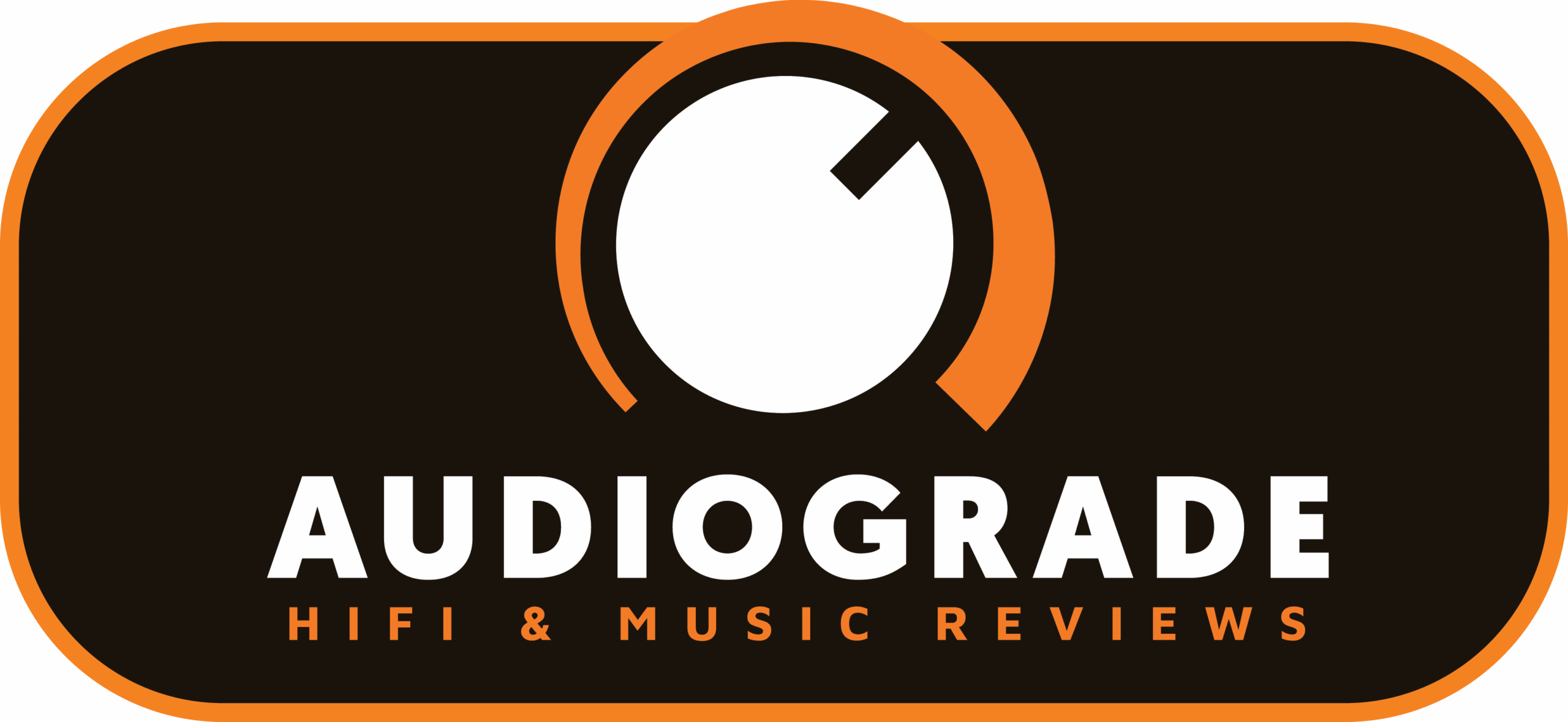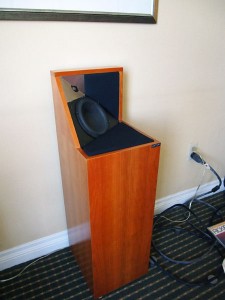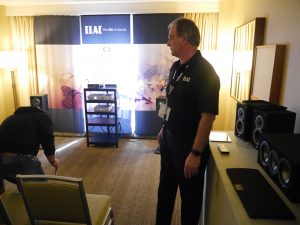The original plan was completely different: the Old Pinacotheca (German: Alte Pinakothek - collections of paintings from the 14th to the 18th century), the New Pinacotheca (German: Neue Pinakothek - a collection of European art from classicism to art nouveau), perhaps even the Deutsches Museum (Masterpieces of Science and Technology)—the largest museum of this type in the world. The Pinacotheca , as it is known, houses Rafael's and Dürer's works, as well as the largest collection of Rubens's art. The Deutsches Museum is equally interesting, with its three main city departments: the main collection with over 650 thematic sections, as well as two specialist departments—the automobile museum (Deutsches Museum Verkehrszentrum) and the museum of aviation (Deutsches Museum Flugwerft Schleißheim).

This is what the whole area of the English Garden more or less looks like.
(Source: Wikimedia)
The end result was folk, as usual, i.e. an open-air restaurant that can hold 7000 people, located next to the (the Chinese Pagoda) in the Englischer Garten (English Garden). There were 7000 seats and all of them had actually been taken. Nevertheless, the atmosphere was nice, and the place was clean and pleasant. People drink lots of beer, both downstairs and upstairs in the pagoda where a brass band in Bavarian folk costumes plays music. Already the day before, when we were standing on the terrace of the Swiss Consulate, we heard people shouting and, from time to time, we saw surfers running with their boards. Surfers? Oh yeah, there is a little river producing an artificial wave at the rim of the garden, right next to the Consulate, where surfers train. The whole complex covers the area of 3.7 km2 (370 ha) and consists of a lot of smaller spatial elements: a lake, small forests, meadows, an observation tower, the Pagoda, etc. (for comparison: the area of the Błonia Park in Cracow is 48 ha). The garden can be accessed on foot in ca. 15 minutes from the city centre. As you can imagine, we also used the opportunity to get to know the charms of the place.
I will begin my story by writing about the city which is simply fantastic, as I cannot stop thinking about the High End Exhibition 2016: it resembles the Englischer Garten. It is a place for entertainment and meetings, only secondarily treated as a venue for listening sessions. Not everyone will agree with me, I think, as I saw many zealous music lovers who would sit down and remain still for a long while, but I cannot help it—this is the way I see it. The exhibition was held during a long weekend, starting with the Father's Day and a celebration of the Assumption of the Virgin Mary—both are treated very seriously in the capital of Bavaria. So, there is nothing strange about the fact that the four days are ludic and resemble a big Polish celebration of the long May weekend.
Surfers in the city? – Why not!
(Photo: Wikimedia)
Of course, I am talking about visitors, not exhibitors. For the latter, that was a week of grind involving equipment transport, arrangement and setup, as well as a fight with acoustics. Even though after several years, often in the same rooms, many of them achieve excellent results, the fact is that we listen to music in rooms that are completely inadequate for the purpose. The best places are rooms with an area of a few dozen square meters each, in the so-called Atriums where the walls are quite thick and the door can be closed. However, even those rooms have two glass walls each. It is much harder for those who are seated in the enormous Halls (Halle) of the size of a football pitch, in which some exhibitors have open boxes and some have rooms with several square meters of floor space and thin walls.
So, it might seem that those who said the exhibition would not work, right after the organizer (the High End Society) had moved it from the Kempinsky Hotel in Frankfurt, were right. However, the numbers prove otherwise. As we informed in our news, a long time before the exhibition started, all the available exhibition stands had been booked. We are talking about over 500 companies (manufacturers and distributors). Branko Glisovic, the CEO of the High End Exhibition, said: "Naturally, you try to get as many exhibitors as possible. However, when you reach the limit of 28,361 square meters of the exhibition venue, then it is all about capacity."

A view of Atrium 4 from a little gallery which connects two parts of Atrium 4.2
Most new exhibitors (316) were from outside Germany this year. They constituted 63% of all exhibitors, i.e. 2% more compared to last year. Obviously, most of the companies have a German passport. The second most numerous group were 40 companies from the UK which was ahead of the USA, Italy, France, China, Japan and Switzerland. Polish exhibitors have also been taking part in the event for years. This year we were represented by Albedo, Bauta, Fezz Audio, Franc Audio Accessories, LampizatOr, Pylon, Taga and others. Kurt Hecker, the Chief Executive of the High End Society, said: "It means that the High End offers not only a broad, but also an international range of companies, thus serving everyone as a place with innovative energy for the whole audio industry. It is a basis for the growing importance and brand recognition of the High End. We are delighted with the faith of exhibitors in our exhibition."
The High End Exhibition reached the maximum capacity offered by the M.O.C. Now, one can only keep on dividing it. This is of no importance for visitors, but it is a slaughterhouse the press, music lovers and audiophiles. I take full responsibility for what I say, based on my experience of attending all High End exhibitions in Munich and a few in Frankfurt. Obviously, I could not reach all the exhibitors, not to mention listening to all the systems for longer than 10 seconds. The people I talked to, including press representatives such as Matijas from the Stereo magazine and Stuart Smith from HiFiPig (interview HERE), and exhibitors, had exactly the same impressions.
So, what I already noticed a few years ago and strongly stressed last year, i.e. the fact that High End exhibitions are turning into a fair, is becoming reality. It is a venue for meetings, talks and presentations of new technologies and solutions. One needs to prepare a schedule in advance, with the exact times and locations, to make the most of the event. The times when it was possible to see and hear everything are gone. Now it is time for specialization and reduction. This year, rather than run from one room to another, I preferred to get to know a few new firms and products better, and talk longer to those of my friends and acquaintances that I see once a year. Nevertheless, I had the impression that I did not devote enough time to them and that the effort they had put into preparing the stand and presentation deserved more than just a few or several minutes. The respect that I feel towards their work deserves more.
So, I am not going to include a description of the highest possible number of devices and systems. It is a more and more subjective selection of trends and places worth talking about—in my opinion, of course. But, who knows, perhaps such a presentation of the exhibition makes the most sense and is going to provide some specific information, not only banal remarks? Our readers will judge that.
THE SOURCE ISSUE
In my opinion, the most interesting information is connected with trends that could be observed this year. They are not new, as they have been developing for years, but, perhaps, as it seems, now it is time for logical solutions.
Number one in all the discussions was the "source issue" that is especially close to my heart. Digital revolution 3.0 (after the CD and mp3) that we are dealing with has reached its saturation phase. The pursuit of higher and higher sampling frequencies and word length has reached the limit of the available technology and common sense—we are talking about the DXD (32/384) on the one hand and the Octuple DSD (DSD512, 22.5792 MHz) on the other hand. Even though there are virtually no DXD and DSD512 recordings and not much is going to change in this matter in the future, DAC manufacturers have been involved in a war of numbers, as if their survival depends on it. However, the exhibitors that I talked to said that the madness has made them lose money—people do not want to buy new products, as they are afraid that next year even more innovative products are going to be made, characterized by even better performance (in theory).
René Laflamme and Nagra – a perfect combination
Taking it all into consideration, it is worth stressing a common sense approach of some retailers selling Nagra products, for example. It is a company which has been developing products based on PCM coding for years—first in the form of digital reel tape, then CD players and now recorders and hard disk players. Its latest product is the cute excellent two-in-one recorder and player—Seven. As René Laflamme, the company's representative and sound director (Fidelio Musique, 2 x HD) told me, despite its small size, the device is really transparent and very musical.
On the other hand, the same amount of common sense is demonstrated by the DSD "camp". Gerhard Hirt (Ayon Audio) has prepared a new file player which plays DSD Direct files through an Ethernet connection. However, this is not everything—the player is equipped with a digital-to-analog converter which… is not there. DSD signal does not require anything else apart from a simple analog filter for conversion. I have heard about a similar concept of the Polish company Amare Audio, but Gerhard told me that he was the first person in the world to come up with the idea. He developed it in cooperation with the Stream Unlimited company.
Even though it might seem that the approaches adapted by both of the "camps" are mutually exclusive or that you need to choose one, it is not so. Both perspectives are equal, but different results are achieved in each case. People have been asking me for some time, also during the exhibition, what I think about DSD—whether it is the format that is going to "win". Well, to cut a long story short, nothing is going to "win" and, anyway, almost everyone will listen to PCM recordings for the simple reason that, roughly speaking, 99.9% of recording and mastering studios work on the basis of digital PCM equipment. Even if the end product is converted to DSD, it is still going to be PCM, but "broken down".
However, this coding method is characterized by such important sound qualities that those who care about this type of sound will always find a way to reach analog recordings converted to DSD or simple recorded in DSD. So, if I were to look into a crystal ball, I would probably see the absolute dominance of PCM—first in CD quality and then perhaps in 24/96 and 24/192 quality. Right next to it, in a really small safe niche, one would find DSD as the format for the "initiated".
Not possible? Of course it is possible! The vertical Pro-Ject VTE turntable that can be put on a desk or hanged on a wall. The turntable is based on the Elemental model construction. A spring in the arm ensures needle pressure.
Vinyl is going to be much more popular than DSD. Even though it still accounts for only a few per cent of overall sales, it is the only medium which shows an increase of a few dozen per cent year-to-year, while turntable sales are growing as well. During the exhibition, the Pro-Ject company officially celebrated its 25th anniversary. During a celebration meeting, the company owner and CEO—Mr. Heinz Lichtenegger—said they are now building their sixth manufacturing facility in the Czech Republic, in Austria they are moving to new headquarters and employing 600 new people. When it comes to the audio industry and the turntable, which is a really niche product, the information is really surprising.
The turntable is trendy again and one could see many of its versions at the exhibition—from every price range and for every user: both for connoisseurs and those who want to stay up-to-date. Perhaps this is part of something bigger, e.g. a significant swing of the pendulum towards physical formats. There was a turntable in most of the rooms. However, in many of them music was played from a reel-to-reel tape recorder, from master tape copies. That was real music, not just boring audiophile stuff, little bells and noise made by moving chairs. At the stand of the Horh Audio company, which was the guest of High Fidelity during the Audio Show exhibition in Warsaw, one could see, listen to and buy analog copies of Deutsche Gramophone mother tapes, but also of the band Yello, as well as the Star Wars soundtrack. Tape represents an ultra-niche market, but a very influential one that speaks to people's imagination.
Apart from that, in many rooms there were again Compact Disc and Super Audio CD players. Metronome Technologies, Cambridge Audio, Audiolab, DPS EAR Yoshino, CEC, Musical Fidelity, Accustic Arts, Trigon, Neodio (CD), dCS, CH Precision, Luxman, Marantz, Denon, TAD and EMM Labs (SACD)—all the companies presented new or improved versions of 12-cm optical disc players and used them during demonstrations (a new version of the CD Red Reference was also announced by Chord). Many companies—Gryphon, YBA, LOIT, Viva Audio and Pathos simply used devices that they have had on offer for some time. A CD player could even be found as one of the sources in Van den Hul's room!
I do not want to convince anyone, of course, that physical media are returning in full glory, as it is obviously not true. The future looks bright for HD files playing. Even though it is not clear yet whether this is going to be streaming, which is strongly supported by MQA coding, or playing files from local constant memory, the trend has been set. I want to show a certain principle: the audio industry is incredibly conservative. So, if it is possible to retain something that has already been achieved, it tries to preserve it. So, the Renaissance of the cassette tape, which was also present at the exhibition, is not a coincidence.
It seems to me that the editorial staff of the Gramophone magazine is right. In the article entitled The Vinyl Revolution they write that if BPI survey results that they quote in the text are correct, the future of the audio industry is "cross-media" music consumption (May 2016, Volume 93, p. 15). I have nothing else to add.
What did I miss at the exhibition? Stands with recordings from small record labels—the ones present at the exhibition were big stores. I also lacked devices which would really change things when it comes to technology, looks and workmanship, not to mention the fact that I had little time for everything. Apart from that, that was a very successful exhibition and an even better trip.
BEST OF THE SHOW
An attempt to point out the best sound at such a big exhibition, when you need four days to get to know everything (without listening to any given sound too carefully), is doomed to fail. It is like throwing darts at a rotating dartboard. Anyway, I would like to mention a few presentations that kept us in the rooms for a longer time and where everything was really OK. This year, we gave the BEST SOUND High End 2016 award only to six rooms, we honored three more and we would also like to give a special award to one company for its achievements to date. We are also going to tell you about the (probably) most important presentation at the exhibition.
I: Best Sound
Pluto Audio | Air Tight | Blumenhoffer | Cammino
The room had virtually no acoustic sound control elements. It was equipped with tube Air Tight devices placed on charming (yet industrial) stands with adjustable height, as well as with asymmetrically arranged speakers. All of this resulted in dense dark (i.e. natural) sound. High dynamics and excellent space management completed the impression of "finished", polished and well thought-out sound.
Nagra | Kronos | Wilson Audio
The new Nagra Classic PRE preamplifier and Classic AMP power amplifiers, in cooperation with the Classic DAC produce powerful trustworthy sound. René Laflamme presented his recordings from an SD card to us, played using the professional recorder/player Seven. A Kronos turntable also sounded perfect. However, the highlight of the show was the sound of an analog master tape and it was what finally convinced us.
C.E.C. | Thrax | Silberstatic | Trinnov | Emiral | Absolue Créations
The CEC TL 0 3.0 is the best Compact Disc transport that I know. However, it lacked an equally good digital-to-analog converter. Munich was the place where we first saw the DA 0 3.0. Some of its features include two digital filters, reclocking, upsampling and a discreet multi-bit converter of 25 bit resolution, built on resistors arranged in an R/2R ladder, as well as a USB 32/384 input. Together with the Thrax Dionysos preamplifier, Thrax Heros power amplifiers, electrostatic Silberstatic Nr. 8 speakers, Trinnov Amethyst room/speaker optimizer and Absolue Créations cables, the CEC transport produced sweet, smooth and incredibly pleasant sound.
Audiovector | Gryphon | Arcam
Who has said that speakers must be expensive to produce good sound? Audiovector demonstrated that good engineering, manufacturing the product in one's own factory and the taste of creators result in an incredible combination. Mads Klifoth, the son of the Audiovector's founder, is especially proud of the new speakers from the QR series—as he says, it is the first product prepared by him from start to finish. Regardless of excellent workmanship and very good converters used (including a modified AMT), the speaker prices start from €810 (+ VAT) for the QR1bookshelf speakers. It is true that signal amplification during the session was provided by the (costly) excellent Gryphon Diablo 300, but I test speakers for High Fidelity in the same way. The source, i.e. the Arcam CDS27 SACD/file player was also not too expensive. In the picture you can see Mr. and Mr. Klifoth—the father and the son.
Kondo | Kaiser Acoustics
Marek Dyba, our editorial colleague, spent most of his Munich time in this room. No wonder—it is an excellent combination of warmth, softness and resolution. The sound was very close to what you hear live. The demonstrated finished version of the Kondo C-1000 line preamplifier worked with a yet not complete version of a phono stage. The Keiser speakers used are specially dedicated for Kondo amplifiers.
Bauta | Accuphase | Siltech | Wireworld | Base
At the end of our visit to the exhibition we went to Jacek Gawłowski to listen to his Bauta speakers. Jacek was probably the only person who has won the Grammy Award for sound design, presenting music at the High End 2016 exhibition. So, it is a pity that he did not write the information on a huge banner and did not boast about the Polish Jazz series—both the award and the records are praiseworthy 🙂 I remember listening to these speakers in his mastering studio and I must say that the exhibition sound was even better in some respects—mainly when it came to the smoothness and velvetiness of the midrange and treble. The bass was not bad, especially considering the fact that the 2-meter speakers were placed at the corners of a small room. Even though the speakers can normally do much more—well done! The Accuphase A-200 amplifiers, Siltech Triple Crown cables, top-class WireWorld cables, and an Accuphase player and preamp contributed to the overall success as much as the speakers did.
II: Additional awards
Gryphon
The Mephisto amplifier and Kodo speakers—the new company flagship products undoubtedly represent the first audio league. The workmanship is excellent and the sound—fantastic. The exhibition room was a little too small for these monsters, but when they are provided with lots of space, they may produce the best sound in someone's life. The signal source was the Mikado Signature Compact Disc player.
DPS EAR Yoshino | Rockport Technology | ISOL-8
Tim de Paravicini is one of the most important constructors who are still running their own companies. During the exhibition, he used three sources—the EAR Disc Master turntable, the EAR Acute Classic Compact Disc player and a Denon reel-to-reel tape recorder. Frankly speaking, all of them convinced me the room deserved a reward, but the analog tape was the most powerful.
Einstein | TechDAS
The Einstein Audio company is the German distributor of the TechDAS brand. The company room featured a new, better version of the flagship Air Force One Premium turntable. There were also other, equally interesting premiere products with the Einstein Audio logo, i.e.: The Tonearm, The Phonostage and a total novelty - The Speaker (speakers). Three words: taste, culture, and knowledge provide a good short description of these devices.
III: Special award
Pro-Ject
Heinz Lichtenegger during the 25th anniversary meeting. At the background, on the right—his wife, Josefina Krahulcova (wearing a red flower dress) who runs the EAT company. The hair on the left belongs to Ken Kessler, the editor of Hi-Fi News & RR, while the hair on the right—to Michael Fremer working for Stereophile and Analog Planet.
An anniversary party of a turntable manufacturer in digital times might be associated with the owner's retirement anniversary. The pension would not be too high as even Salomon cannot pour from an empty jug. However, Heinz Lichtenegger's business intuition and market knowledge allowed him to see something behind the green curtain of falling digits—something that made him invest in a technology older than anyone who is alive. Twenty five years later, Pro-Ject is one of the largest, if not the largest, manufacturer of turntables and associated devices in the world. One might say this is a company which has helped to maintain the beautiful combination of art and technology for future generations. We wish them all the best!
IV: Event
Bowers & Wilkins: premiere of the Diamond series
Time and place: 5.05.2016
Bayerischer Hof Hotel
Promenadepl. 2-6, 80333 Munich
Text: Bartosz Pacuła
Photos: Bartosz Pacuła | Bowers & Wilkins
Translation: Ewa Muszczynko
Bowers & Wilkins speakers from the top Diamond series can safely be regarded as one of the flagships of modern high-end. They are stylish, stand out from the crowd and at the same time avoid cheap controversy. People may think whatever they like about them (and about the sound they offer), but no one who knows at least a little about audio is going to deny the speakers their place in the history of the audio industry. That increased my satisfaction when I accepted an invitation to the world premiere of the reference 800 D3 model which completes the completely upgraded 800 Diamond series launched last year.
Initially, the series included six models (three floor, one monitor and two central speaker models), as well as two dedicated stands. We had to wait for the top representative of the 800 series for a year. During this time, the company has managed to come to terms with the success of its new products and got used to hard work that was needed to maintain that success. As it is officially declared by B&W representatives, over 15,000 speakers from the 800 series have been sold all over the world so far, which is an amazing achievement, considering high-end audio prices.
The premiere of the reference 800 D3 model took place on May 5th at the Bayerischer Hof Hotel in Munich, exactly at the time when the High End 2016 exhibition was held at the MOC centre. The organizers did not dramatically unveil their treasure during the presentation, but put their new flagship speakers in a kind of a "waiting room" where people could enjoy looking at them. After inviting us, i.e. journalists and distributors from all over the world, to another room, Bower's employees shortly described the philosophy behind the 800 series, talked about the company's achievements and tried to prove that the 800 D3 model are the best speakers that have ever been manufactured by the company. Undoubtedly, "dismantling" the speaker was a very interesting idea. Every participant was given each component for a moment, thanks to which I could closely look at the new midrange driver, as well as hold the Turbine head (I had not known it is so heavy!). Then the time came for the most important thing, i.e. demonstrating the performance of the speakers and allowing the participants to verify what had been said about them.
I can call this listening session successful. It was coherent, full of meaning and helped me understand what the 800 D3 is all about. The first thing to mention is the power of sound that cannot be ensured by the top Bowers & Wilkins floor speakers. Thanks to the 800 D3, everything is big, powerful and mighty—there is no place for any audiophile forest or guitar sounds (unfortunately, there was also time for that)—what matters is the energy, dynamics and power. It was really well demonstrated by one electronic music track, where everything "settled" as it should. The 800 D3 also played other kinds of music really well (including the audiophile guitar, I must admit), but it was clearly visible that these columns want something completely different.
Bowers & Wilkins 800 D3 speakers are a real product. It is based on specific philosophy, technology and joy of music. The model really comes across as beautiful live (ditching yellow Kevlar was like hitting the bull's eye from the point o view of design) and its sound demonstrates really well what high end is. It is not a product for everyone, but fans of the type of sound described above should feel delighted.
A few final words
The Consulate General of Switzerland in Munich is located at Prinzregentenstraße 20. When you are at a terrace situated at the top floor, you can see both the adjacent English Garden and admire a panoramic view of the old town. A sunset watched from that perspective was breathtaking, the more that it became part of a meeting held to celebrate the 10th anniversary of the Swiss Soulution company whose product—the 710 power amplifier—has been the basis of my audio system for a few years now. The meeting, organized in cooperation with Vovox, was a pretext for bringing together people connected with Soulution and demonstrating the latest product—the integrated amplifier from the '300' series. It is going to be the cheapest series from that manufacturer, two times less expensive than the '500' series.
We spent the evening in the company of Matthias Böde, the edito-in-chief of the "Stereo" magazine, as well as Chatzidimitriou Athanase, a Greek brand distributor and his wife. There were Poles, Greeks, and a German in the middle 🙂 So, the outcome was naturally a conversation about politics. I was surprised by how well Matthias knows the Polish reality. However, Chatzidimitriou's point of view also gave us some food for thought, as it came directly from a person who had experienced crisis. sometimes the atmosphere was heated, but, fortunately, "music has charms to soothe a savage Breast" – Heidi Happy, a Swiss artist known from her cooperation with Yello (among others), gave us a special, almost private concert—"One Woman Show" with guitars and a loop station. Only that and also—so much! That was an example of the purest music. Then, I just bought a few records and got a few autographs, and… Goodbye, Munich!
High End Exhibition 2016
Munich | Germany
5-8th May 2016
M.O.C., Munich
HIGH END SOCIETY MARKETING GMBH
Hatzfelder Straße 161-163 | 42281 Wuppertal - Germany
www.HighEndSociety.de
GERMANY
Text: Wojciech Pacuła
Photos: Wojciech Pacuła
Translation: Ewa Muszczynko




















































